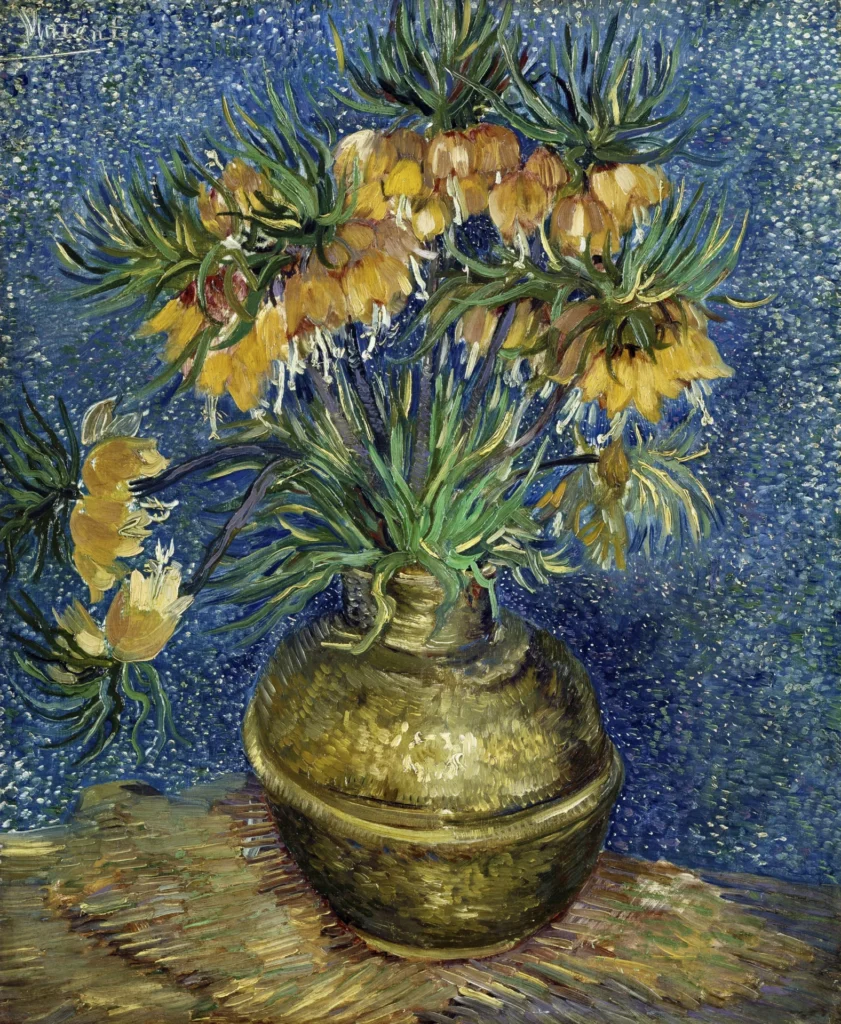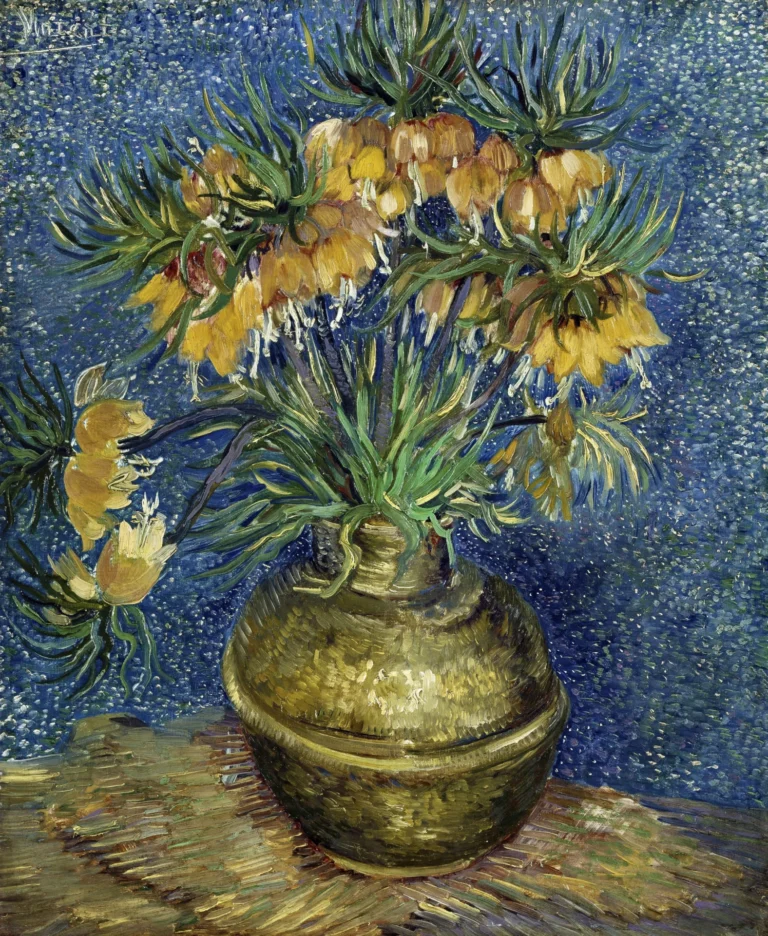Imperial Fritillaries In A Copper Vase (1887)
Created in 1887 during his influential time in Paris, Vincent van Gogh's Imperial Fritillaries in a Copper Vase captures a stunning bouquet of golden fritillaries in a copper vessel. The painting is marked by mixed techniques, showcasing both Pointillism elements in the background and expressive Impressionist brushstrokes for the flowers. The vibrant colors and thick application of paint reflect van Gogh's emotional elevation, establishing a connection between nature and his evolving artistic identity. Signed simply as 'Vincent', this work signifies a pivotal moment in the artist's journey.
Year 1887
About the Artwork
In 1887, during a transformative period of his artistic career, Vincent van Gogh found inspiration in the blooming flowers of spring. His stay in Paris brought him into contact with various artistic movements and innovators. The Imperial Fritillaries in a Copper Vase is a synthesis of these influences, mixing Pointillism and Impressionism to create a vivid and lively celebration of nature. Reflective of his emotional state, the painting's exuberance hints at the colors, textures, and light that would come to define his later works, such as 'Sunflowers' and 'The Starry Night'. This piece signifies not only his technical prowess but also the personal evolution of van Gogh, as he sought to establish a distinct personal style.
Did You Know
Vincent van Gogh’s time in Paris was transformative, as it exposed him to various artistic styles and movements, particularly Impressionism and Pointillism, which significantly influenced his techniques in Imperial Fritillaries in a Copper Vase.
The vivid colors in this artwork reflect van Gogh’s emotional state during the creation of the painting. His use of bold golds and blues is characteristic of his ability to convey feelings through color, marking a departure from his earlier, darker works.
Van Gogh’s choice to sign his works as ‘Vincent’ instead of ‘Vincent van Gogh’ was an intentional decision to create a distinct identity, especially as he sought to gain recognition in the competitive Parisian art scene.










